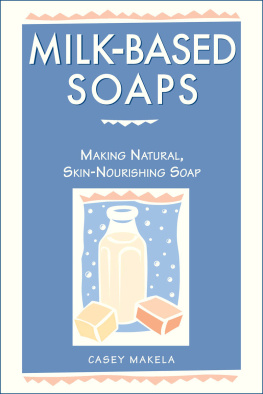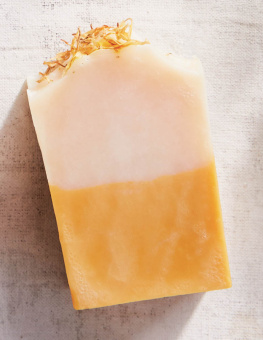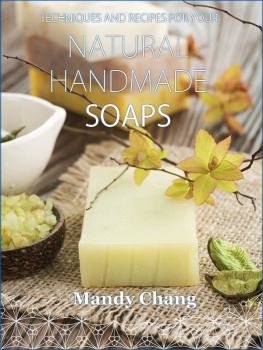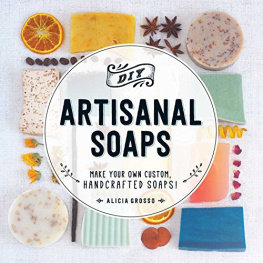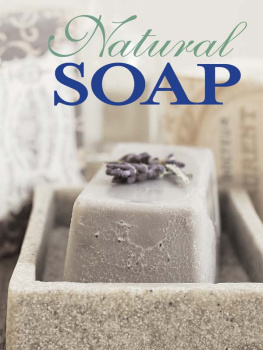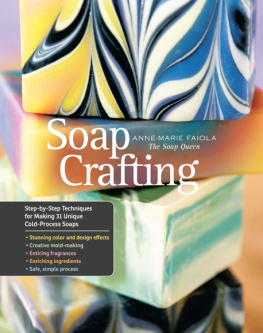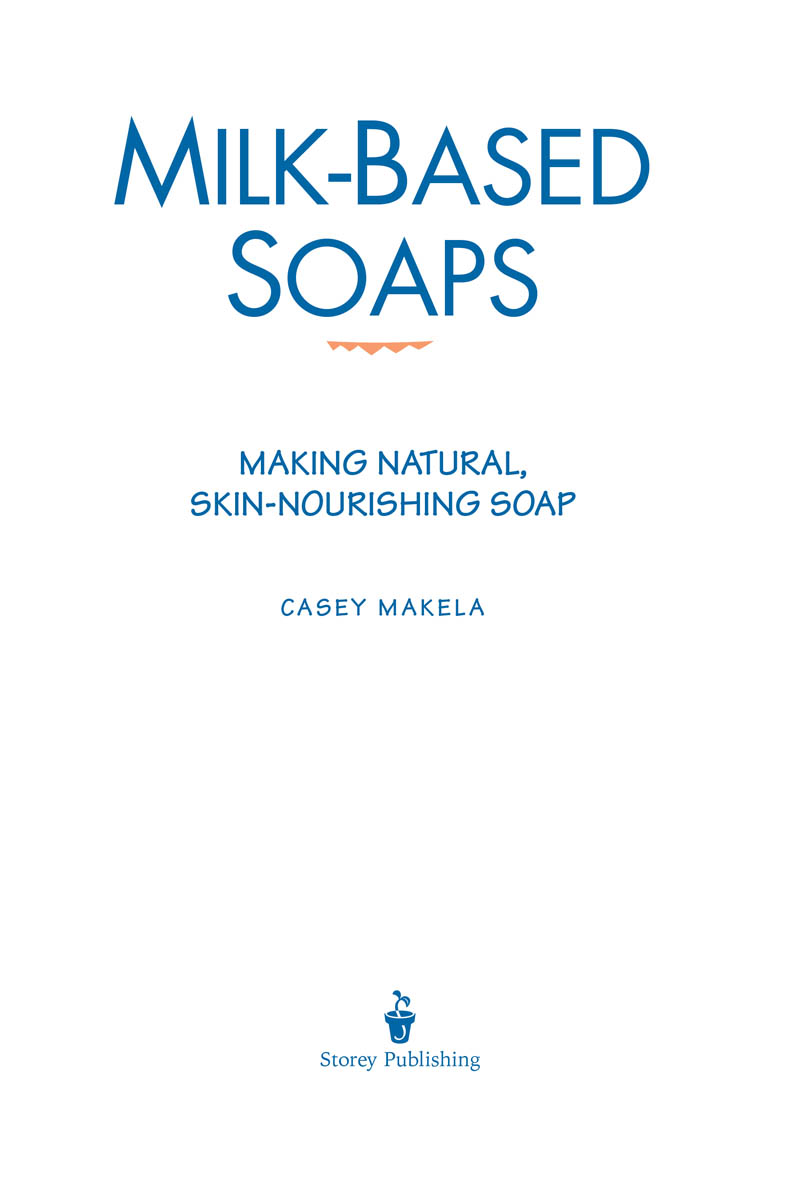The mission of Storey Publishing is to serve our customers by publishing practical information that encourages personal independence in harmony with the environment.
Edited by Jenna Dixon
Cover design by Carol Jessop, Black Trout Design, and Susan Bernier
Cover art and interior spot illustrations by Laura Tedeschi; all other illustrations by Randy Mosher
Text design by Susan Bernier (based on an original design by Carol Jessop, Black Trout Design)
Text production by Jeff Potter, Potter Publishing Studio
1997 Storey Publishing, LLC
Ebook production by Kristy L. MacWilliams
Ebook design by Dan O. Williams
Ebook version 1.0
December 16, 2014
All rights reserved. No part of this book may be reproduced without written permission from the publisher, except by a reviewer who may quote brief passages or reproduce illustrations in a review with appropriate credits; nor may any part of this book be reproduced, stored in a retrieval system, or transmitted in any form or by any means electronic, mechanical, photocopying, recording, or other without written permission from the publisher.
The information in this book is true and complete to the best of our knowledge. All recommendations are made without guarantee on the part of the author or Storey Publishing. The author and publisher disclaim any liability in connection with the use of this information.
Storey books are available for special premium and promotional uses and for customized editions. For further information, please call 1-800-793-9396.
Storey Publishing
210 MASS MoCA Way
North Adams, MA 01247
www.storey.com
CONTENTS
DEDICATION
What joy in life could there ever be without good friends and loving family?
Kimberly Ann Walker
My family patiently and lovingly allows me to be a writer and my good friends spur me on. I am forever grateful to them all.
To William, my beloved thank you for your endless patience. You are so much more than just a husband. Your encouragement and support are a lifeline to me.
To my children: Marion, your beautiful freckle-faced smile illuminates my imagination. You are my rose in bloom. I love you. John, thank you for your bear hugs and sharing your dreams about tractors. I love my little farmer man. Patti, thank you for making me laugh when I lose my sense of humor. I love you to the Max. Lori, your motivation is an inspiration to me. I will always love my Bubbles and look forward to calling you Dr. Bubbles! Sara, my Indian Woman. I love my darling girl. You are very special and a precious gem to me. Dani, you share my love of writing and I know you understand. I love you and we will travel through Europe together someday. Wes, you redefine humor and make us all laugh, and I love you for that. To all of you, thank you for being my children and giving me the joy of motherhood. You are my greatest accomplishments in life.
Mom I know you are always there. Thank you for loving me when I need it most.
Maryanne thank you for the many long hours you spent helping me, editing, and telling me I could. You are a gifted writer and a true friend.
Edie your enthusiasm and joy for life are infectious. Thank you for making me feel special and being my friend.
Denise thank you for showing me the lighter side of life and reminding me to laugh at impossible situations. Just keep the angel food cake coming!
Dean thank you for baby-sitting me through the trials and errors of my first computer. I wish you great success with I-STAR.
Chapter 1
A Glance Back
There is nothing in this world except the history you do not know.
Harry S. Truman
Soapmaking is a unique marriage of science and art. As a science, soap is the chemical combination of fat (either vegetable or animal) and alkali; in home soap production, the alkali used most often is sodium hydroxide, known commonly as lye. The soapmaking process is called saponification, meaning to convert a fat or oil into soap by the action of an alkali.
As an art, it inspires experimentation with colors, textures, scents, and shapes, offering an open invitation to be creative.
Cleansing agents are mentioned in the Bible in Job 9:30, Jeremiah 2:22, and Malachi 3:2. Malachi mentions the lye of laundrymen. A more specific description of soap is found in the writings of a first-century naturalist-historian, Pliny the Elder, in 77 a.d. Pliny described various forms of hard and soft soaps renowned as rutilandi capilli, making hair shine. These soaps were used by women to cleanse and enhance hair color.
GROWTH OF SOAP INDUSTRY
Ancient history reveals that soap in its early forms was regarded as a mere necessity and was in no way comparable to the giant cosmetic counterpart of today, in either development or commercial popularity. When advancements in the production of soap led to increased public demand and created new markets, the soap industry grew by leaps and bounds. With a heritage steeped in the lavish history of the famous bath-houses of Rome, soap became a valuable article of commerce in early Europe, despite efforts by the early Christian church to discourage bathing as an immodest practice.
In the thirteenth century the soap industry was introduced to France from Italy. At that time most soap was made by boiling goat tallow with beechwood ash (the source of the alkali or lye) and water. Inspired by what they had learned from Italian soapmakers, French soapmakers experimented further to improve soap quality and developed a method of making soap from olive oil instead of animal fats. Around the year 1500 they introduced their discoveries to England, where the industry grew rapidly.
EARLY FACTORY
A remarkably extensive soap factory was found by excavators among the ruins of Pompeii, an ancient city of Italy considered a resort area to the Romans.
Colonial American Soap
In the early American colonies, soapmaking was an individual household task as important as spinning, weaving, candlemaking, and other common domestic skills. Hardwood ashes were kept and put into a leaching barrel, a large wooden barrel with a plugged hole near the base. A thin layer of stones was put in the bottom, and a layer of straw on top of the stones filled up the rest of the barrel. These barrels were kept near the house or barn, where they could catch water runoff from the roof on rainy days. Once the ashes in the leaching barrel were saturated, the plug was removed and the lye-water was allowed to drain out into a nonmetal container in the amount needed for a batch of soap. A common test of the lyewaters strength was to dip a feather in it: If the feather dissolved, the lye-water was strong enough to make a batch of soap. If not, the water was poured back into the leaching barrel. These homemade soaps were a soft type that would not be very desirable by todays standards including a reputation for smelling bad but they were effective enough for everyday cleaning.

